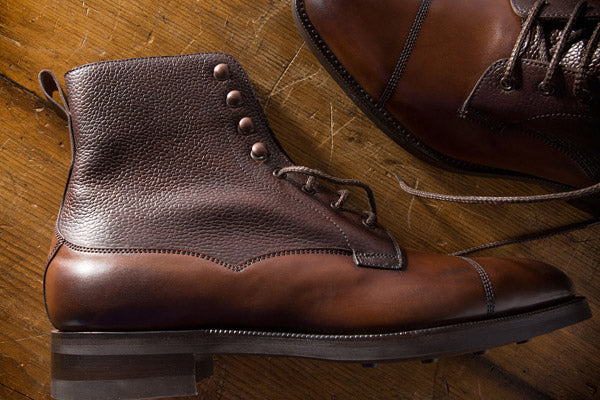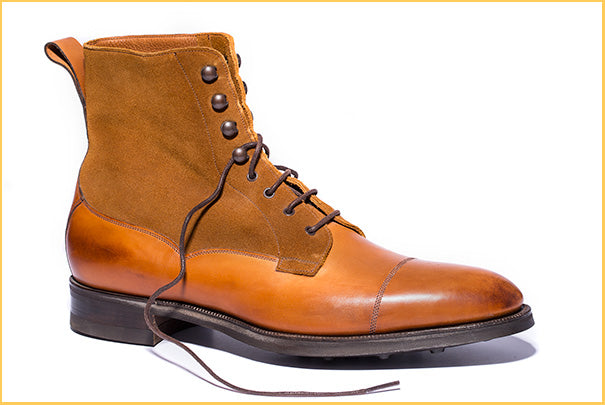The Galway Boot
The Rugged Beauty of the Galway Boot
The western coast of Ireland rises out of the Atlantic like Poseidon pushed it up from below. Vast expanses of green sit atop sheer cliffs that descend into the roiling water beneath them. Large weather systems carry moisture from the sea, bringing steady doses of rain that keep the fields and forests lush and fertile. Roughly halfway down the coast from its northernmost tip, the shoreline turns sharply east and inward, forming a V-shaped inlet.
It is here that County Galway lies, in the province of Connacht. Most of it is covered with the large fields of working farms dotted with houses and walls made of stone hewn and harvested from the land itself. It is an area known to epitomize the character and beauty of rural Ireland. So it comes as no surprise that the boot carrying its name has many of the same traits of the land and its people: rugged yet beautiful, capable of withstanding the elements while maintaining a certain country elegance synonymous with Galway.
Traveling east, down roads that wind through thet Irish countryside, crossing the Irish sea on a ferry and driving farther into the heart of England, you arrive in Northampton. For over 800 years this town northwest of London has been perfecting the art of making shoes. Edward Green, one of the older and more respected companies in the business borrowed the boot and the name from their Irish cousins and elevated it to their exacting standards of quality and beauty.

At Edward Green every stage of the shoemaking process is carried out with care and precision by the hands of experienced craftsmen. Only the best parts are cut out of the calf hide and skived to remove any extraneous bits on the edges. Next the leather is perforated before going to the most difficult step in the whole operation: hand closing. Since the holes in the leather are too small for even a sewing needle, only the highest grade of shoemaker--A1--is allowed to carry out this task. He must use a pig bristle to carefully connect the leather pieces that form the upper part of the shoe.
Once the upper is finished it is pulled over any one of hundreds of lasts--varying in shape and size for precise fit--and left several weeks to ensure a perfectly formed shoe. After stitching the leather to the famed Goodyear welt, the bottom of the shoe is filled with cork and covered with the sole. Even finishing the shoe takes several meticulous steps: sanding, buffing and inking the sole before the leather is antiqued and hand-polished for a perfect shine.
Making the Galway boot, with its additional height, grommets, hooks and two types of leather, takes particular finesse. In the hands of the people at Edward Green, the Galway boot is lifted to new heights, from the rugged working boot to a thing of beauty. Though you may not want to wear them while working in the field or mucking stalls, you can rest assured your Galway boots from Edward Green will stand the test of time, maintaining their shape and style, offering superior comfort and durability. For years to come, your Galway boots will keep the character of the part of Ireland where they got their name.

the
DETAILS


the
PROCESS







the
STYLES







